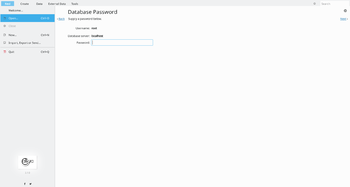Kexi: Difference between revisions
Appearance
| Line 42: | Line 42: | ||
* [[Special:myLanguage/Kexi/Tutorials|Tutorials]] | * [[Special:myLanguage/Kexi/Tutorials|Tutorials]] | ||
* Documentation | * Documentation | ||
** | ** '''[[Special:myLanguage/Kexi/Handbook|The Kexi Handbook]] for Kexi 2.4''' | ||
** The Kexi Handbook [http://docs.kde.org/stable/en/koffice/kexi/index.html on docs.kde.org] for Kexi 1.1 (outdated but mostly the main window GUI differs, other things are nearly the same) | ** The Kexi Handbook [http://docs.kde.org/stable/en/koffice/kexi/index.html on docs.kde.org] for Kexi 1.1 (outdated but mostly the main window GUI differs, other things are nearly the same) | ||
** <strike>[[Special:myLanguage/Kexi/Cheat Sheet|Kexi Cheat Sheet]]</strike> (planned) | ** <strike>[[Special:myLanguage/Kexi/Cheat Sheet|Kexi Cheat Sheet]]</strike> (planned) | ||
Revision as of 20:07, 17 October 2011
 |
Rapid Application Development, for handling your database needs |
Features
- Full visual designers for tables, queries, forms and reports
- Running queries, support for parametrized queries
- Supports SQLite, MySQL, PostgreSQL and MS SQL Server databases
- The only multiplatform graphical tool importing data from MS Access databases
- Supports query design in dedicated SQL view
- Designing and displaying relational data using combo boxes (lookup columns)
- Direct data entry or import using CSV format
- Locked down User Mode, allowing you to switch off all commands related to editing your project's design
- Scripting using JavaScript, Python or Ruby programming languages
- Many more features
Read more and see many more screenshots on the project's pages.
 |
 |
 |
Documentation, Tutorials and Samples
- Tutorials
- Documentation
- The Kexi Handbook for Kexi 2.4
- The Kexi Handbook on docs.kde.org for Kexi 1.1 (outdated but mostly the main window GUI differs, other things are nearly the same)
Kexi Cheat Sheet(planned)- Note: scripting is undocumented, please read [1] for more information
- Samples
- Simple database (kde-files.org)
- Data importing using Javascript (kde-files.org)
- Follow the project on Twitter or identi.ca.

